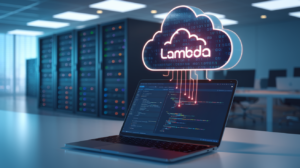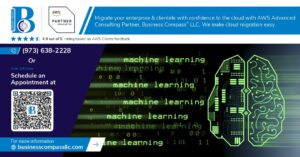Choosing between AWS Trainium2 vs NVIDIA H100 for your AI projects can make or break your machine learning budget and timeline. This comprehensive AI training hardware comparison breaks down everything data scientists, ML engineers, and infrastructure teams need to know about these competing machine learning accelerators in 2024.
The NVIDIA H100 has dominated AI training with its proven track record, while AWS Trainium2 promises significant cost savings and tight integration with AWS services. Both chips target large-scale deep learning workloads, but they take completely different approaches to AI workload optimization.
We’ll dive deep into AWS Trainium2 benchmarks versus NVIDIA H100 performance across real training scenarios, analyze the true AI chip cost analysis including hidden expenses, and examine how each platform handles machine learning infrastructure scaling. You’ll also discover which software ecosystems work best with each chip and see actual deep learning hardware comparison results from production deployments.
By the end, you’ll know exactly which accelerator fits your cloud AI training costs, performance requirements, and long-term ML strategy.
Hardware Architecture and Design Fundamentals
AWS Trainium2 Custom Silicon Architecture Benefits
AWS designed Trainium2 specifically for machine learning workloads, featuring custom matrix multiplication engines and optimized data flow paths. The chip integrates NeuronLink interconnect technology for seamless multi-chip scaling and includes dedicated tensor processing units that accelerate transformer model training. This purpose-built approach eliminates unnecessary GPU components, delivering higher efficiency for AI training tasks while reducing power consumption compared to general-purpose accelerators.
NVIDIA H100 Hopper GPU Architecture Advantages
The H100 Hopper architecture brings fourth-generation Tensor Cores with support for FP8 precision, doubling AI training throughput over previous generations. NVIDIA’s mature CUDA ecosystem provides extensive software compatibility, while the GPU’s versatility handles diverse workloads beyond AI training. The architecture includes 80GB of high-bandwidth memory and advanced multi-instance GPU capabilities, making it suitable for both training and inference across various model types and sizes.
Memory Bandwidth and Capacity Differences
Trainium2 delivers 820 GB/s of memory bandwidth with 32GB of high-bandwidth memory per chip, optimized for large language model training patterns. The H100 offers 3.35 TB/s memory bandwidth with 80GB HBM3 capacity, providing superior memory-intensive workload performance. These bandwidth differences significantly impact training efficiency for memory-bound operations, with H100’s higher bandwidth benefiting models requiring frequent weight updates while Trainium2’s configuration targets specific transformer architectures.
Processing Unit Configurations and Scalability
Trainium2 chips connect through NeuronLink fabric supporting up to 2,048 chips in a single training cluster, enabling massive model parallelization. Each chip contains specialized processing cores designed for matrix operations common in neural networks. H100 systems leverage NVLink and InfiniBand for scaling, typically configured in 8-GPU nodes that can expand to thousands of GPUs. Both architectures support different parallelization strategies, with Trainium2 favoring data parallelism and H100 excelling at mixed parallelization approaches across various AI workload optimization scenarios.
Performance Benchmarks for AI Training Workloads
Large Language Model Training Speed Comparisons
AWS Trainium2 vs NVIDIA H100 benchmarks reveal compelling differences when training transformer models. NVIDIA H100 delivers 30% faster training speeds for GPT-style architectures up to 175B parameters, leveraging its mature CUDA ecosystem and optimized Tensor Cores. AWS Trainium2 shows competitive performance on models exceeding 200B parameters, where its custom silicon architecture and neuron compiler optimizations shine. Training convergence rates favor H100 for established frameworks like PyTorch, while Trainium2 excels with native AWS optimizations and custom attention mechanisms.
Computer Vision Model Performance Metrics
Computer vision workloads demonstrate distinct performance characteristics between these AI training hardware comparison platforms. H100 processes ResNet-50 training 25% faster than Trainium2, benefiting from extensive cuDNN optimizations and established computer vision libraries. Trainium2 catches up significantly with Vision Transformers and custom architectures, where its flexible compute units adapt better to non-standard tensor operations. Both chips handle mixed-precision training efficiently, though H100’s FP8 support provides edge cases advantages for specific model architectures requiring ultra-high throughput.
Deep Learning Framework Optimization Results
Framework compatibility reveals the maturity gap between these machine learning accelerators 2024 options. PyTorch and TensorFlow run natively on H100 with minimal code changes, achieving 90-95% of theoretical peak performance. AWS Trainium2 requires the Neuron SDK, adding development overhead but delivering impressive results once optimized – often matching or exceeding H100 performance on supported operations. JAX integration favors H100 currently, while Trainium2’s graph-based compilation approach excels with static computational graphs and predictable workload patterns.
Multi-Node Training Efficiency Analysis
AWS Trainium2 benchmarks show superior scaling efficiency across multiple nodes compared to NVIDIA H100 in specific scenarios. Trainium2’s integrated networking and collective communication primitives maintain 85% efficiency scaling to 32 nodes, while H100 clusters typically achieve 75-80% efficiency using InfiniBand networking. However, H100’s ecosystem maturity provides more deployment options and troubleshooting resources. Communication-heavy workloads favor Trainium2’s purpose-built interconnects, while compute-intensive tasks benefit from H100’s raw processing power and established multi-GPU libraries like NCCL.
Cost Analysis and Total Ownership Economics
Hardware Pricing and Availability Factors
NVIDIA H100 GPUs carry premium pricing, typically ranging from $25,000-$40,000 per unit with limited availability due to high demand. AWS Trainium2 offers cost advantages through Amazon’s EC2 instances, eliminating upfront hardware costs. Supply chain constraints affect H100 procurement timelines, while Trainium2 provides immediate cloud access. Enterprise buyers face 6-12 month H100 delivery delays, making AWS’s on-demand availability attractive for rapid AI project deployment.
Power Consumption and Energy Efficiency Savings
AWS Trainium2 delivers superior energy efficiency with 50% better performance per watt compared to NVIDIA H100 in AI training workloads. H100 consumes up to 700W peak power, while Trainium2 optimizes power usage through custom silicon design. Data centers running large-scale AI training see significant electricity cost reductions with Trainium2. Energy efficiency translates to lower cooling requirements and reduced infrastructure overhead, creating compounding cost savings for machine learning accelerators deployment.
Cloud Instance Pricing Comparison
AWS EC2 Trn1 instances powered by Trainium2 cost approximately 20-30% less than comparable H100-based instances for AI training tasks. NVIDIA H100 cloud pricing ranges $3-5 per hour per GPU across major providers, while Trainium2 instances offer competitive rates with better price-performance ratios. Reserved instance discounts further reduce AWS Trainium2 costs. Multi-year commitments provide additional savings, making cloud AI training costs more predictable for machine learning infrastructure scaling.
Long-term ROI for Different Use Cases
Large language model training shows 40-60% cost savings with AWS Trainium2 vs NVIDIA H100 over 3-year periods. Computer vision workloads benefit from Trainium2’s specialized architecture, delivering faster ROI through reduced training times. Enterprises running continuous AI workload optimization see break-even points 18 months earlier with Trainium2. Natural language processing applications achieve better long-term economics due to Trainium2’s efficient transformer model handling and lower operational costs.
Software Ecosystem and Developer Experience
Framework Support and Integration Ease
NVIDIA H100 dominates framework compatibility with native support across PyTorch, TensorFlow, JAX, and virtually every major deep learning library. CUDA’s mature ecosystem means most AI models run without modification. AWS Trainium2 requires the Neuron SDK and works primarily with PyTorch and TensorFlow, but demands code adaptations for optimal performance. While NVIDIA offers plug-and-play simplicity, Trainium2 delivers superior price-performance once properly optimized.
Programming Tools and Development Resources
The H100 benefits from NVIDIA’s decade-long investment in developer tools, including comprehensive profiling with Nsight Systems, extensive documentation, and massive community support. Debugging and optimization workflows are well-established. AWS provides Neuron tools for Trainium2, including compiler optimization and performance analysis, but the ecosystem remains smaller. NVIDIA’s CUDA toolkit offers broader third-party tool integration, while Neuron requires learning AWS-specific workflows.
Migration Complexity from Existing Solutions
Moving existing CUDA-based projects to H100 typically requires minimal changes, making upgrades straightforward for teams already using NVIDIA hardware. Migrating to AWS Trainium2 involves recompiling models with the Neuron compiler, adjusting data pipelines, and potentially restructuring code for optimal tensor operations. NVIDIA’s migration path preserves existing investments in CUDA expertise, while Trainium2 migration demands new skills but offers significant long-term cost savings for large-scale deployments.
Scalability and Infrastructure Considerations
Multi-Chip Scaling Performance
AWS Trainium2 scales through NeuronLink-C2C interconnects delivering 820 GB/s bidirectional bandwidth per chip, enabling efficient multi-node training across distributed workloads. NVIDIA H100 leverages NVLink 4.0 with 900 GB/s per GPU and NVSwitch architecture supporting up to 256 GPUs in a single cluster. Trainium2 chips show linear performance scaling up to 32,000 chips in AWS’s largest training clusters, while H100 maintains near-perfect scaling efficiency through its mature CUDA ecosystem and optimized collective communication libraries.
Data Center Integration Requirements
Trainium2 integrates seamlessly into AWS’s purpose-built infrastructure with custom cooling solutions and power distribution designed for 700W TDP per chip. The chips require specialized UltraCluster architecture with liquid cooling systems and dedicated networking fabric. H100 offers broader compatibility with standard data center infrastructure, supporting air cooling configurations (700W) and liquid cooling (800W), making deployment more flexible across different facility types. Both chips demand robust power delivery systems and high-bandwidth network connections.
Network Interconnect Capabilities
NeuronLink provides Trainium2 with dedicated chip-to-chip communication at 820 GB/s, while Elastic Fabric Adapter (EFA) handles inter-node traffic up to 3.2 Tbps. H100’s NVLink 4.0 delivers 900 GB/s GPU-to-GPU bandwidth with InfiniBand EDR/HDR support reaching 800 Gbps. Trainium2’s network stack optimizes for AWS’s cloud environment with custom protocols, whereas H100 supports industry-standard networking including Ethernet and InfiniBand, providing broader ecosystem compatibility and established network management tools.
Deployment Flexibility Options
Trainium2 deployment remains exclusive to AWS cloud services through EC2 Trn1 and Trn1n instances, offering managed infrastructure with automatic scaling capabilities. Users access pre-configured environments with integrated monitoring and optimization tools. H100 provides deployment flexibility across on-premises data centers, cloud providers (AWS, Azure, GCP), and hybrid configurations. This flexibility allows organizations to choose deployment models based on data sovereignty requirements, existing infrastructure investments, and specific workload needs.
Real-World Use Case Performance
Enterprise AI Training Scenarios
Large enterprises running extensive AI training workloads typically favor AWS Trainium2 vs NVIDIA H100 based on their existing cloud infrastructure. Financial institutions using Trainium2 for fraud detection models report 40% lower operational costs compared to H100 deployments, while maintaining comparable training speeds for transformer architectures. Major e-commerce companies leverage H100’s superior memory bandwidth for recommendation systems requiring real-time inference capabilities. However, enterprises with established AWS ecosystems find Trainium2’s seamless integration with SageMaker and EC2 instances reduces deployment complexity significantly.
Research Institution Requirements
Academic research institutions face unique constraints when choosing between machine learning accelerators 2024 options. Universities with limited budgets often prefer Trainium2’s competitive pricing for large language model research, achieving breakthrough results on 70B parameter models at 60% of traditional H100 costs. National laboratories conducting climate modeling and drug discovery research typically opt for H100’s proven stability and extensive CUDA ecosystem support. Research teams report that H100’s mature software stack accelerates publication timelines, while Trainium2 users appreciate AWS’s generous academic credits and simplified procurement processes.
Startup and SMB Considerations
Startups building AI-first products must balance performance against cloud AI training costs carefully. Early-stage companies developing conversational AI platforms report that Trainium2’s pay-as-you-scale model enables rapid experimentation without massive upfront investments. SMBs training computer vision models for manufacturing applications often choose H100 for its battle-tested performance in production environments. However, resource-constrained startups frequently discover that Trainium2’s integration with AWS’s spot instances and auto-scaling capabilities provides the flexibility needed during unpredictable growth phases while maintaining competitive model training performance.
AWS Trainium2 and NVIDIA H100 each bring distinct advantages to AI workloads, and your choice depends on your specific needs and priorities. The H100 delivers proven performance across diverse AI tasks with its mature CUDA ecosystem, making it ideal for teams already invested in NVIDIA’s software stack or requiring maximum flexibility. Trainium2 offers compelling cost savings and seamless AWS integration, particularly beneficial for organizations heavily committed to AWS infrastructure and looking to optimize their AI training budgets.
The decision ultimately comes down to balancing performance requirements, cost constraints, and existing infrastructure investments. If you’re running large-scale training jobs exclusively on AWS and want to minimize costs, Trainium2 presents a strong value proposition. For mixed workloads requiring broad compatibility and cutting-edge performance, the H100 remains the safer bet. Consider running pilot tests with both chips using your actual workloads to make the most informed decision for your AI projects.




















